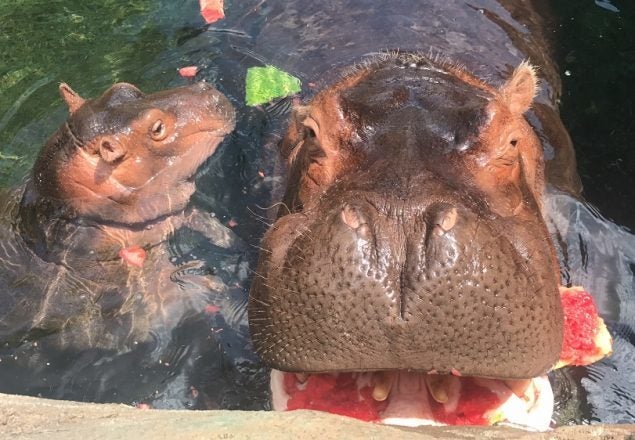
Fiona gets to enjoy her mom’s leftover watermelon on National Watermelon Day. She can’t handle whole watermelons yet.
Feeding more than 500 animal species with a wide range of dietary needs is a big job. To make things more complicated, Cincinnati Zoo & Botanical Garden has more than its share of picky eaters. Even animals of the same species can have unique preferences.
“We have one red panda that will do anything for grapes and another that can’t eat them because they upset her stomach. Only one of the red pandas likes mango. The others won’t eat it. Humphrey the camel loves carrots, but his female companion refuses to eat them (she likes sweet potatoes),” said senior Wildlife Canyon keeper Lissa Browning.
That’s where the Zoo’s nutritionist comes in. It’s Barbara Henry’s job, as the Zoo’s curator of nutrition, to know what each animal’s nutritional needs are and to procure the right foods for them. “None of our animals eat junk food or processed foods that contains impossible-to-comprehend additives. They get the very freshest whole foods,” said Henry.
Formula for Fiona
In addition to providing a variety of diets daily, unusual nutritional challenges pop up from time to time. The most recent example of this would be the unexpected need to provide food for Fiona, the famous premature baby hippo. No data existed for creating a hippo milk formula when Henry was trying to do just that. “Luckily, we were able to get some milk from Fiona’s mom, Bibi, and sent that off to National Zoo’s milk repository for analysis. Their scientists broke down the main ingredients, and we started developing a formula,” said Henry. “Milk for any mammal changes over time, and so did the hippo formula. We adjusted the recipe as we went.”
Today Fiona is in the process of being weaned and weighs 580 pounds! Listen to this Smithsonian podcast about the collaboration that unlocked the secrets of hippo milk and helped Fiona get big and strong:
The Zoo Gourmet
In the wild, animals must fend for themselves and find food on their own. At the Cincinnati Zoo, the task of ordering, preparing, and delivering food to all of the animal departments is the job of the keepers at the Commissary, a sort of in-house grocery store and kitchen. What does it take to feed all the animals at the Zoo?
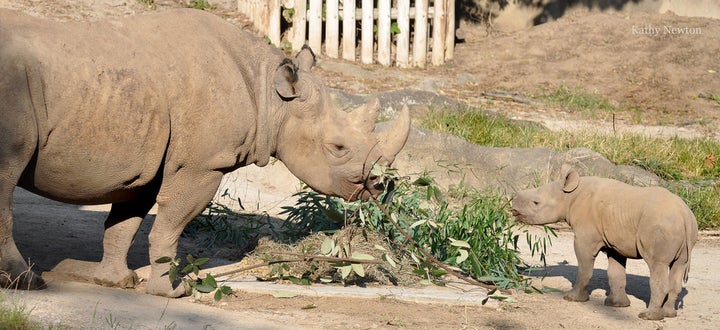
Rhinos Seyia and Kendi munch on browse that has been delivered by the Commissary keepers.
Every morning the Commissary keepers deliver the food needed to each animal department. The afternoon is spent placing orders, unloading trucks, stocking shelves and getting the next day’s deliveries ready. Eggs (about 30 dozen a day), potatoes and carrots are cooked, the fish and meats are weighed and thawed, and the foods are sorted into boxes.
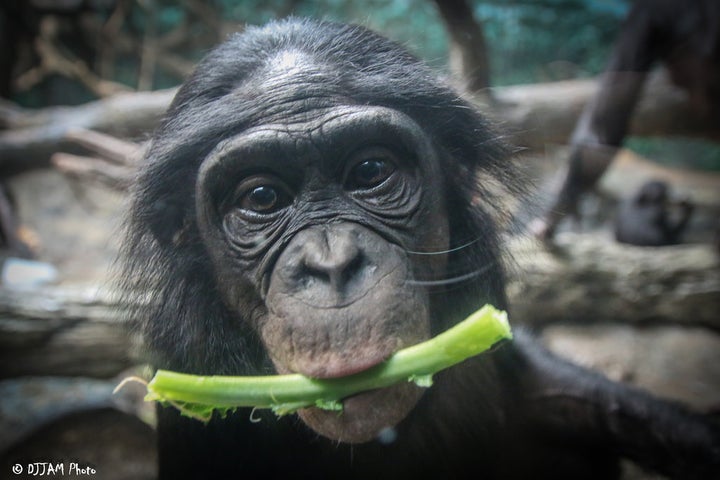
A Balanced Diet
Just like people, animals need a balanced diet. That balance is different for each animal, depending on whether it’s an herbivore, omnivore, or carnivore. Henry makes sure each animal gets the proper nutrition by putting together a recipe, considering species and individual needs.
- What does a tiger nosh? Meat, meat, and more meat!
- What does a skunk fancy? A dinner with both meat and plants.
- What does a zebra munch? It has only plants for lunch.
Apples and Beyond
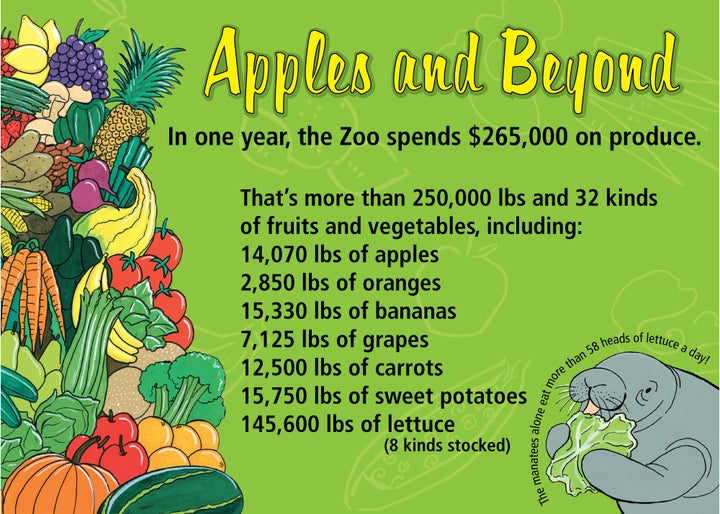
In one year, the Zoo spends $265,000 on produce. That’s more than 250,000 lbs (685 lbs/day) of 32 different kinds of fruits and vegetables! The manatees alone eat more than 58 heads of lettuce a day!
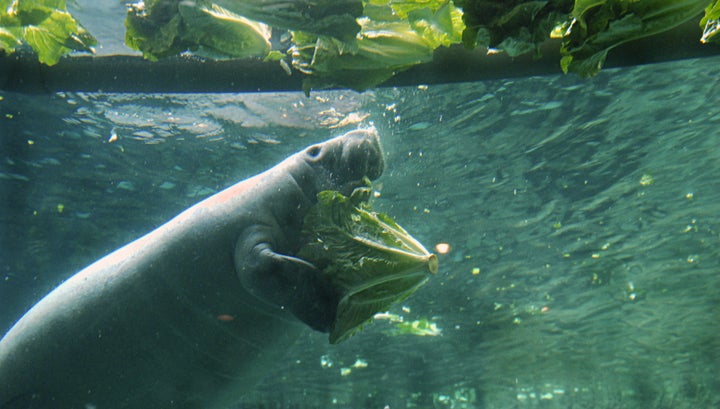
Steak, Fish, and Crickets…Oh My!
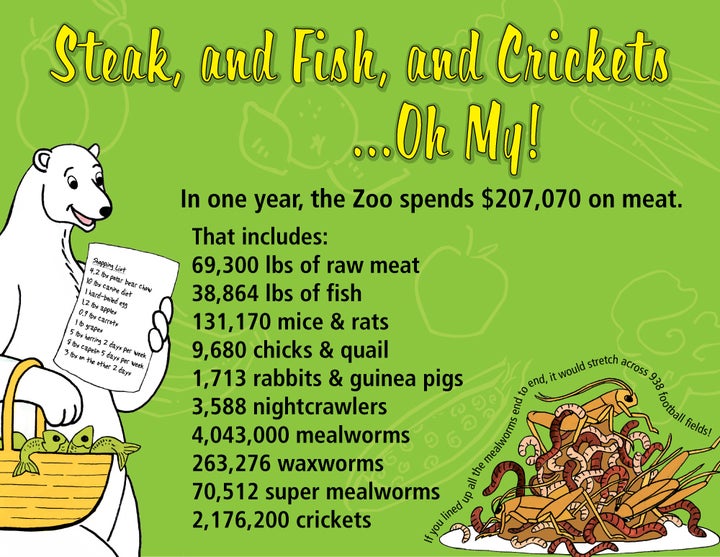
In one year, the Zoo spends $207,070 on meat. If you lined up all the mealworms end to end, it would stretch across 938 football fields![i]
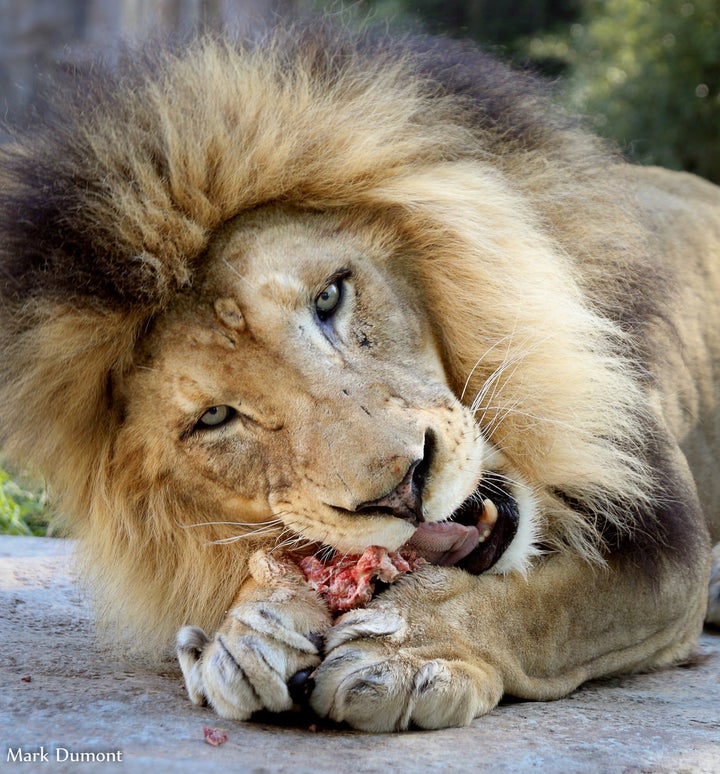
John the lion chows down on some meat!
Chow Down
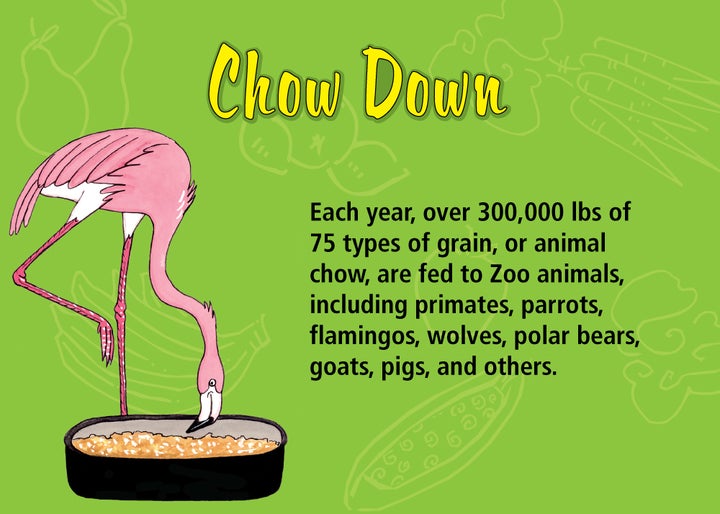
Each year, over 300,000 pounds of more than 75 different types of grain, or animal chow, are fed to Zoo animals, including primates, parrots, flamingos, wolves, polar bears, goats, pigs, and others.
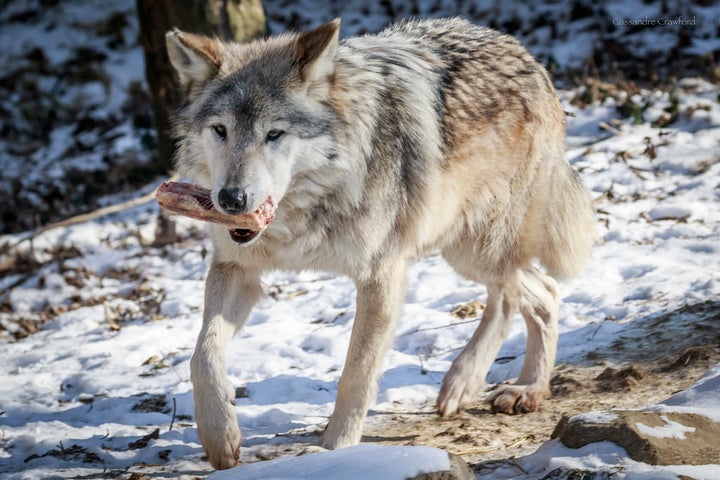
What the Hay?
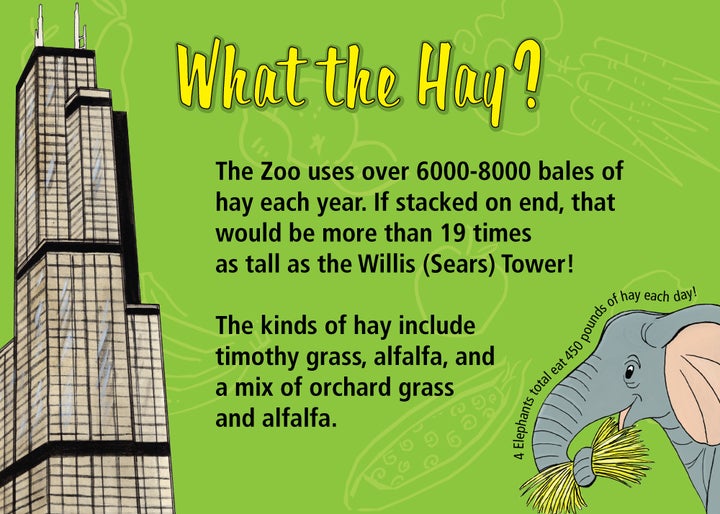
The Zoo uses 6000-8000 bales of hay each year. If stacked on end, that would be more than 19 times as tall as the Willis (Sears) Tower![ii] The kinds of hay include timothy grass, alfalfa, and a mix of orchard grass and alfalfa. Between the 4 elephants total that live here, they eat 450 pounds of hay each day!
The Cincinnati Zoo & Botanical Garden is one of only 18 Association of Zoos and Aquariums (AZA) facilities to have a post-graduate-degreed curator of nutrition on site. We are also fortunate to have a hard-working, dedicated Commissary staff that makes sure each animal area gets exactly the right quantity and types of food delivered to their areas daily.
[i] 1 mw=1” and 63,630 inches in a mile so we figured about 63.8 miles; 1 football field = 120 yds = .068 mi
[ii] we figured each bale is 4 feet long so if we use 7,000 bales then the length of all of our hay in one year it would be 28,000 feet and Willis Tower is 1,451 ft tall.
About the Cincinnati Zoo:
The world famous Cincinnati Zoo & Botanical Garden is committed to inspiring visitors to care about wildlife and wild places. It has been rated the #1 attraction locally and one of the top zoos in the nation by Zagat Survey. It has also received rave reviews from Child Magazine, Parents Magazine, USA Today and TripAdvisor. Over 1.5 million people visit the Zoo’s award-winning exhibits, and more than 500 animal and 3000 plant species annually. The Zoo, an accredited member of the Association of Zoos & Aquariums (AZA), is internationally known for its success in the protection and propagation of endangered animals and plants and engages in research and conservation projects worldwide. Known as the #GreenestZooInAmerica, the Zoo is doing its part to conserve natural resources that are critical to saving wildlife and its habitats and is committed to greening its daily operations and reducing its impact on the environment through the use of rain gardens, recycled building materials, solar panels and more. The Cincinnati Zoo is a 501(c)(3) nonprofit organization.
